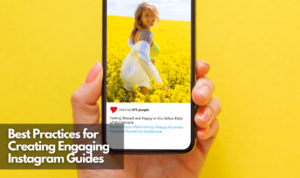Designing Social Media Campaigns takes center stage, inviting readers into a world of creativity and impact. Dive into the art of captivating campaigns that resonate with audiences and elevate brand presence.
Importance of Designing Social Media Campaigns
In today’s digital age, designing social media campaigns has become an essential component for businesses looking to establish a strong online presence and connect with their target audience. A well-crafted social media campaign can make a significant impact on brand visibility, engagement, and ultimately, drive business growth.
Impact on Brand Visibility and Engagement
When businesses invest time and resources into designing social media campaigns, they have the opportunity to showcase their brand personality, values, and offerings to a wider audience. By creating visually appealing content, utilizing engaging copy, and incorporating interactive elements, businesses can capture the attention of users scrolling through their feeds. This increased visibility can lead to higher brand recognition and recall among consumers.
Successful social media campaigns are also designed to encourage user engagement and interaction. Whether through polls, contests, or user-generated content, well-thought-out campaigns can spark conversations, generate buzz, and foster a sense of community around the brand. This active engagement not only strengthens the relationship between the brand and its audience but also helps in building brand loyalty over time.
Examples of Successful Social Media Campaigns
1. Nike’s “Dream Crazier” Campaign: Nike’s campaign featuring powerful visuals and inspiring stories of female athletes challenging stereotypes resonated with audiences worldwide. The use of bold imagery, impactful messaging, and a call-to-action to share personal stories led to widespread engagement and positive brand sentiment.
2. Wendy’s “#NuggsForCarter” Campaign: When a Twitter user asked Wendy’s how many retweets he would need for a year of free chicken nuggets, Wendy’s responded with a challenge. The playful exchange went viral, with users rallying behind #NuggsForCarter to help him reach the goal. This campaign showcased Wendy’s witty brand voice, encouraged user participation, and generated massive social media buzz.
3. Airbnb’s “We Are Here” Campaign: Airbnb’s campaign focused on promoting diversity and inclusion by showcasing real stories of hosts and guests from different backgrounds. Through compelling storytelling, visually rich content, and a message of unity, Airbnb’s campaign not only drove brand awareness but also highlighted its commitment to social responsibility.
Designing social media campaigns that resonate with the target audience, evoke emotions, and inspire action is key to achieving success in the digital landscape. By paying attention to design elements, storytelling techniques, and interactive features, businesses can create impactful campaigns that leave a lasting impression on their audience.
Understanding Target Audience: Designing Social Media Campaigns

When it comes to designing social media campaigns, knowing your target audience is crucial for success. Understanding who you are trying to reach allows you to create content that resonates with them and drives engagement.
Importance of Knowing the Target Audience, Designing Social Media Campaigns
- Determining the demographics of your target audience, such as age, gender, location, and income level, helps tailor your message to their specific needs and interests.
- Knowing the interests and hobbies of your audience allows you to create content that is relevant and engaging to them, increasing the likelihood of them interacting with your campaign.
- Understanding the behaviors and preferences of your target audience helps you choose the right platforms, posting times, and content formats to maximize the impact of your campaign.
Tips for Conducting Audience Research
- Utilize social media analytics tools to gather data on your current followers and website visitors to understand their demographics and interests.
- Engage with your audience through surveys, polls, and direct messages to gather feedback and insights on their preferences and behaviors.
- Monitor social media conversations and trends related to your industry or niche to identify common themes and topics that resonate with your target audience.
Elements of a Successful Social Media Campaign Design
When creating a social media campaign, there are several key components that contribute to its success. These elements help in engaging the target audience, driving traffic, and achieving the desired results. Let’s dive into the essential aspects that make up a well-designed social media campaign.
Role of Visuals
Visual content plays a crucial role in capturing the audience’s attention and conveying the message effectively. Here are some best practices for incorporating visuals in your social media campaign design:
- Use high-quality images and videos that are relevant to your brand and message.
- Create eye-catching graphics that stand out in a cluttered social media feed.
- Ensure consistency in visual elements such as colors, fonts, and style to maintain brand identity.
- Optimize visuals for each social media platform to maximize engagement.
Role of Copywriting
Compelling copy is essential for driving action and conveying the brand’s message. Here are some tips for effective copywriting in social media campaigns:
- Craft concise and engaging copy that resonates with the target audience.
- Use a consistent brand voice and tone across all content to build brand recognition.
- Incorporate storytelling techniques to create a connection with the audience.
- Include relevant s and hashtags to improve visibility and reach.
Role of Calls to Action (CTAs)
A strong call to action prompts the audience to take the desired action, whether it’s making a purchase, signing up for a newsletter, or sharing the content. Here are some best practices for effective CTAs in social media campaigns:
- Make CTAs clear, concise, and action-oriented to drive engagement.
- Use compelling language that encourages immediate response from the audience.
- Place CTAs strategically within the content to maximize visibility.
- A/B test different CTAs to identify the most effective ones for your audience.
Platforms and Tools for Designing Social Media Campaigns

When it comes to designing social media campaigns, choosing the right platform is crucial. Different platforms have different strengths and weaknesses that can impact the success of your campaign. Additionally, having the right tools and software to create visually appealing content is essential for catching the audience’s attention. Here, we will explore the various platforms, tools, and tips for optimizing your campaign design.
Social Media Platforms Comparison
- Facebook: Great for reaching a wide audience and engaging with followers through posts, ads, and live videos.
- Instagram: Ideal for visual content such as photos and videos, with a focus on aesthetics and storytelling.
- Twitter: Best for real-time updates, short and concise messages, and interacting with followers through tweets and hashtags.
- LinkedIn: Perfect for professional networking, sharing industry insights, and targeting B2B audiences.
- Pinterest: Excellent for showcasing products, DIY projects, and inspiration boards through visually-driven content.
Essential Tools and Software
- Canva: A user-friendly design tool with templates for social media graphics, posters, and more.
- Adobe Creative Cloud: Offers professional design software like Photoshop and Illustrator for creating custom graphics and visuals.
- Pexels and Unsplash: Platforms for high-quality, royalty-free images to use in your campaigns.
- Buffer and Hootsuite: Tools for scheduling posts, analyzing performance, and managing multiple social media accounts.
Optimizing Campaign Design for Specific Platforms
- Understand the unique features and audience demographics of each platform to tailor your content accordingly.
- Use high-quality visuals and compelling copy to capture attention in the fast-scrolling feeds of platforms like Instagram and Twitter.
- Utilize hashtags strategically to increase visibility and reach on platforms like Instagram and Twitter.
- Experiment with different formats such as carousel posts, stories, and live videos to keep your content fresh and engaging.





